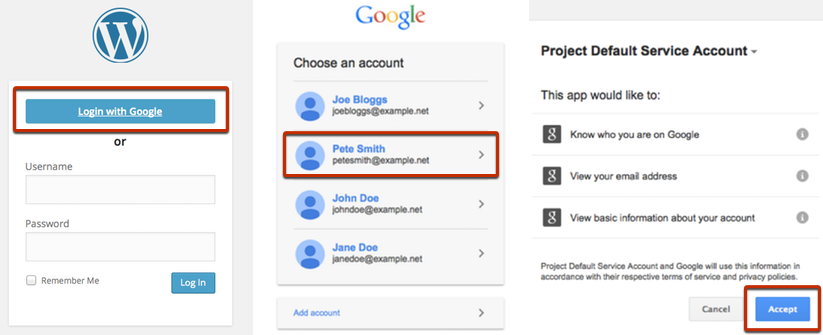Building a loyal audience of paying subscribers isn’t easy, but we can help you with strategies and tools to build your readership and set up subscription billing for WordPress.
Powering your site with WordPress is the first step toward a successful paying audience, for a very good reason. WordPress is a juggernaut: WordPress sites, in total, see over 400 million visitors a month. WordPress is stable, popular, and, best of all, completely customizable with plugins.
In this article, we’re not only going to help you set up subscription billing for WordPress, but we’ll also aid you in finding subscribers and building the kind of content users want to drop money on.
Get the Most Out of a Subscription WordPress Site
One of the main benefits is that, obviously, you’ll be making money from your readers. But more than that, you’ll be creating an exclusive space for your audience.
Your readership can connect through forums and community tools and feel like they belong to a club. When they’re getting content no one else has, they feel special and included.
Lastly, a recurring and regular revenue stream allows you to focus on your content, providing better, more professional products for your subscribers.
Plugins to Set up Subscription Billing for WordPress
WordPress doesn’t come with a built-in way to create premium memberships to your site, but there are plenty of third-party plugins that can help you set up subscription billing for WordPress.
What to Look for in a Subscription Plugin
Many WordPress subscription plugins are similar, but here are some features you want to seek out no matter which plugin you choose.
- Downloads. The plugin should be able to support premium customers downloading digital goods, like PDFs and ebooks.
- Tiered subscriptions. The ability to break subscriptions into levels like silver, gold, platinum, etc.
- Login features. Obviously, members need to be able to log in and access their premium content. Look for a robust login feature that allows user to easily reset their passwords.
- Community support. Your subscription billing plugin for WordPress should also support and integrate with forums, streaming access, or chat features that allow you to build a community out of your audience.
- Recurring payments. Members should be able to opt-in to recurring monthly subscription payments. The ability to offer deals on bulk purchases (six-month subscriptions, a year) is also helpful.
Here are just a few plugins for creating memberships and premium subscriptions.
WooCommerce Subscriptions
WooCommerce Subscriptions is a plugin that allows for multiple subscription tiers, recurring payments at customizable intervals (weekly, monthly, year), subscription management, subscriber accounts, and payments through 25 different methods and apps.
You do need a WooCommerce store attached to your WordPress site to use the WooCommerce Subscriptions plugin, and it will cost you $199.
Cozmoslabs Paid Member Subscriptions
Cozmoslabs created a paid membership subscription plugin designed to be modular and customizable to fit the needs of any digital (or physical) content creator. It uses an array of shortcodes you can add to pages to easily integrate different features of the plugin. This lets you to add a simple bit of text — like “[pms-register]” — on any page or blog, which would then throw in a registration button that users could click to create an account.
You can do the same for logins and restricted content, allowing you to quickly demarcate which sections of your website are visible to free or premium members.
Rebilly WordPress Plugin
Rebilly is a multiplatform app for managing subscription billing, but it also has a WordPress plugin that easily integrates into your existing WordPress page. It accepts over 140 different currencies and almost a hundred different payment gateways.
Rebilly contains all the usual content-gating and membership levels, but where it really shines is with its simple drag-and-drop interface. Creating something like a checkout page for a subscription or digital product is just a matter of grabbing elements from a toolbar and customizing them to your needs and design aesthetic.
Create Premium Content That Deserves a Subscription
Not all content makes money — it’s a hard truth, but it’s one most content creators on the internet have to wrangle with. The wide availability of free, quality content on the internet has worsened our natural proclivity to avoid cracking open a wallet. In this section, we’ll help you create the kind of premium content (and exclusive environment) that will actually convert into subscriptions.
Show Off Your Subject matter Expertise
Anyone can review movies or talk about their day — an audience is only going to pay for your content if you have an advantage over everyone else. Your expertise on your subject matter needs to shine through. Don’t be afraid to include all of your qualifications in your bio, which should appear at the end of every blog.
Why your thoughts and content are worth paying for should be at the top of your mind. If you have a degree, certificate, or in-depth experience, share it. What have you gone through that the reader probably hasn’t? What actionable physical, mental, or spiritual takeaways will the reader be getting? Is it worth their time? It’s your job to answer these questions with every piece of premium or free content you host.
Focus on what you know. If your blog is about making homemade cheese, and you’ve been making cheese for 30 years, put your experience front and center. Get into the nitty-gritty of the process, no matter how technical or niche it might be. The people who pay for WordPress subscriptions want specialized content. That’s why they came there in the first place.
Give Your Audience Something They Can’t Get Anywhere Else
Your expertise is one way to give your subscribers something they can’t get elsewhere, but your content must lead the way.
Make personal connections. Make personalized videos for your audience, perhaps even calling out individuals who have been a large part of your community. Create a stream where you answer the questions your audience has sent to you, or take live questions on the stream for a dynamic, live Q&A.
Cater your premium content to audience needs. You can source content ideas from your audience, which makes them feel heard. If your premium site is about helping people with anxiety disorders, consider creating a blog about a specific issue that’s been brought up in the forums or in the comments section. Even if their concern is relatively niche — “how do I stay calm when I visit my parents and their dogs jump all over me” — you can address it in an article or newsletter about that exact problem.
Once you have a strategy for unique content, it’s time to find subscribers.

How to Get Subscribers
You have the WordPress plugin, you have the premium content — but how do you draw the right kind of audience? Not all readers are willing to shell out cash for online content — but those who are can be found, targeted, and transformed into a regular, paying audience.
Don’t Gate All of Your Content Behind a Paywall
It’s difficult to get readers to commit to a subscription if they don’t have proof your content is worth the expense. Gating all of your content behind a premium subscription will actively hurt your chances of acquiring a new audience. Instead, consider making at least half of your content available to anyone who happens to stumble upon your blog.
Think of your free blog posts, essays, and/or videos as advertisements.
Now, a good portion of your audience will remain at that free tier. That’s okay! Don’t think of them as lost subscribers; think of them as customers standing outside your restaurant, looking at the menu in the window. Better they’re aware of your product and thinking about it then just walking by on the street without glancing in. If your restaurant didn’t even have windows, they’d never know what they were missing.
Embrace Content Marketing to Get More Search Traffic
Writing good content is key to keeping an audience, but there are plenty of excellent blog writers and content creators out there throwing fantastic work into the void. You need eyeballs on your content if you want to charge for it: you need to optimize your SEO.
The basics of SEO are simple — you find a relevant keyword for your free articles, and you make sure to include that keyword in the title, the first paragraph, one of the subheads, and sprinkled a few times through the text in an organic way. Each article or blog you use as a hook to draw in readers should be focused on a keyword. It doesn’t have to be a slavish devotion, but the easier Google can sort the blog, the higher it’s going to rank in a search engine.
Higher rankings mean more chances of users finding your page, more chances of getting hooked on your content, and a greater audience in the long run.
SEO optimization is a deep pool to go swimming in, so here’s a quick guide to SEO for beginners that you might find useful.
Find Your Audience on Social Media
Social media is a huge market to tap, and best of all, people organize themselves by their interests. You don’t even have to go looking to find a potential audience — they could be on the other end of a hashtag.
The key to social media marketing is engagement. If you want more subscribers, you need to find your community and start commenting, retweeting, and liking relevant posts. If you’re writing premium content about advanced carpentry projects, go to a site like best hashtags and type in “carpentry.” It will then give you a breakdown of popular hashtags related to carpentry on Instagram, Twitter, Facebook, and Tumblr.
Then go to your social media site of choice and dig through those hashtags. Post your articles there, where relevant, and you could see a surprising amount of engagement.
Shopify has a helpful social media marketing guide you might want to check out.
Get Subscribers Now
Now that you have the tools and the fundamentals of capturing, keeping, and converting subscribers, you can jump into subscription billing for WordPress right now.
For more information on plugins you might find useful for your journey into premium content and ecommerce, check out this guide to the best WordPress plugins out there.

